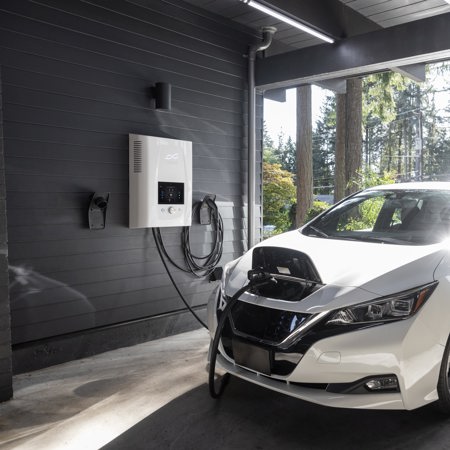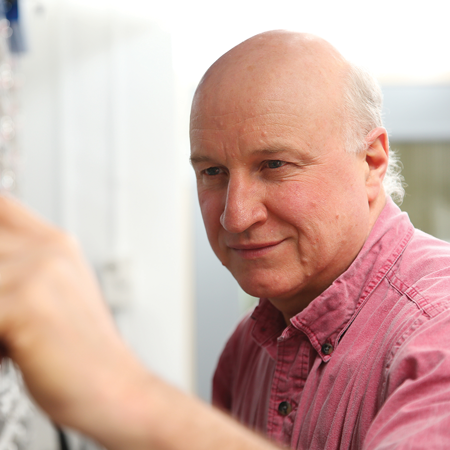According to the International Energy Agency1, in 2021, global consumer spending on electric vehicles doubled to reach USD 250 billion, about eight times more than in 2017. Government spending, such as purchase subsidies and tax waivers, also doubled to nearly USD 30 billion. Worldwide governments' share of total spending for electric vehicles was around 10%, down from about 20% only five years ago. Just as the EV revolution was gearing up to become consumer driven, it became marred by concerns such as rising raw material prices, semi-conductor shortages and recently by a steep rise in electricity prices.
Energy Crisis: can electric vehicles be game changers?

Just as the EV revolution was gearing up to become consumer driven, there was an increase in raw material prices, semi-conductor shortages and recently a steep rise in electricity prices. At a time of energy crisis, are EVs still a game changer?
Higher electricity prices
Higher electricity prices impinge directly on the pockets of EV consumers by increasing the running cost of EVs.
Early EV adopters who are into home charging can benefit from government support in the form of capped energy rates to protect households from spiralling bills. But despite this, soaring electricity prices are leading to concerns that some EV aspirants who may not have access to home charging may be put off. EV aspirants are hit by a double whammy: higher value added tax on public charging relative to home charging and missing out on lower night time tariff rates offered by some electricity providers.

Challenges and opportunities
In the past, crisis situations have often led to innovations, converting challenges into opportunities. For example, the oil crisis of the 1970s spurred research into fossil fuel alternatives and electric vehicles which have come to fruition only recently. According to skeptics, a greater push towards electrification seems counter-intuitive during an energy crisis. However, a simultaneous push towards renewable energy, advances in long-life lithium ion batteries and development of bi-directional charging technology, all of which are already taking place, could prove that the solution lies in the problem itself - we only need to plough on.
Currently the share of renewables in global electricity generation is around 30%2. As the percentage of electricity generated by renewables grows steadily, the case for EVs becomes even stronger ensuring that EVs are a truly green option. Battery technology such as the million-mile battery that can run an EV for a million miles without degradation creates a whole new application, enabling EVs to also be used as energy storage devices for the grid.
“Million mile” battery
The battery demand for an EV as a mode of transport versus a grid connected system is completely different. The requirement for an EV is around 600 cycles3 for the life of the car and batteries today have a capability of 1000 cycles. But grid utilization requires a significantly higher number of cycles. Professor Jeff Dahn, a world-renowned battery scientist and NSERC/Tesla Canada Chair at Dalhousie University and his team have been researching the possibilities of single crystal LiNi0.5Mn0.3Co0.2O2 (NMC532)/graphite cells to solve this problem. According to their research started in October 2017, these cells are still running at room temperature, amazingly realizing 4.5 years of continuous cycling with only ~ 5% degradation at 1C:1C4.

This breakthrough creates an opportunity for the use of EVs as an energy storage device for the grid, increasing the utilization of EV batteries . The million-mile battery with a stable cathode material that does not degrade and continues to cycle allows this. As it does not degrade, it is safer than other technologies. The concept of a million-mile battery is not to run an EV for a million miles per se but much more than that. The million-mile battery with its very long cycle life can power your home and the grid as well as your EV.
EVs and grid stability
According to IEA and Bloomberg, by 2030, global EV stock could reach more than 250 million EVs5. Most electric vehicles sit idle for 95% of the time which presents a huge energy storage capability. Daily charging and discharging an EV without impacting the life of the battery for the purpose of personal transport enables the EV to store and supply energy to the grid. Also, technology exists to manage aggregates of all types of energy storage that can power whole communities. This creates an opportunity for EVs to contribute to grid stability, given that renewable energy such as solar and wind can be intermittent.

Most electric vehicles sit idle for 95% of the time which presents a huge energy storage capability, enabling the EV to store and supply energy to the grid - creating therefore an opportunity for EVs to contribute to grid stability, given that renewable energy such as solar and wind can be intermittent.
The greater utilization of EV batteries that can be achieved as EVs return energy back to the grid can not only lead to new business opportunities but also potential benefits for EV users and energy consumers, especially in times of crisis like the world is facing today.
The Nickel Institute does not endorse any forecast or forward‐looking statement.
1. Source: IEA Global EV Outlook 2022, https://iea.blob.core.windows.net/assets/ad8fb04c-4f75-42fc-973a-6e54c8a4449a/GlobalElectricVehicleOutlook2022.pdf , Page 25
2. Source: IEA Global Energy Review 2021, https://iea.blob.core.windows.net/assets/d0031107-401d-4a2f-a48b-9eed19457335/GlobalEnergyReview2021.pdf
3. Assuming 25,000 km per year X 12 years = 300,000 km; 300,000km/500km/charge = 600 cycles
5. Sources: IEA Global EV Outlook 2022, https://iea.blob.core.windows.net/assets/ad8fb04c-4f75-42fc-973a-6e54c8a4449a/GlobalElectricVehicleOutlook2022.pdf; Bloomberg New Energy Finance (https://about.bnef.com/blog/net-zero-road-transport-by-2050-still-possible-as-electric-vehicles-set-to-quintuple-by-2025/)

